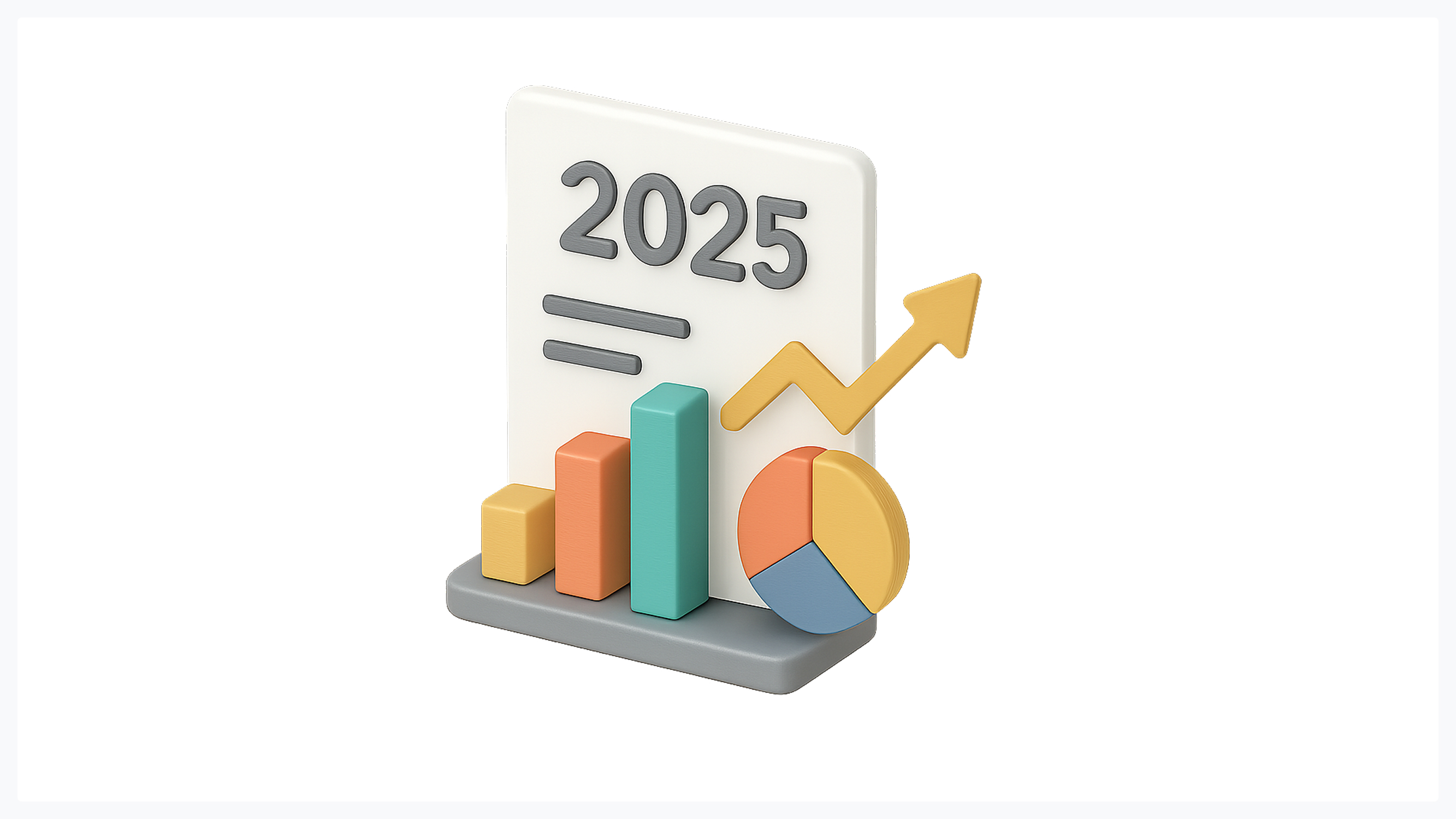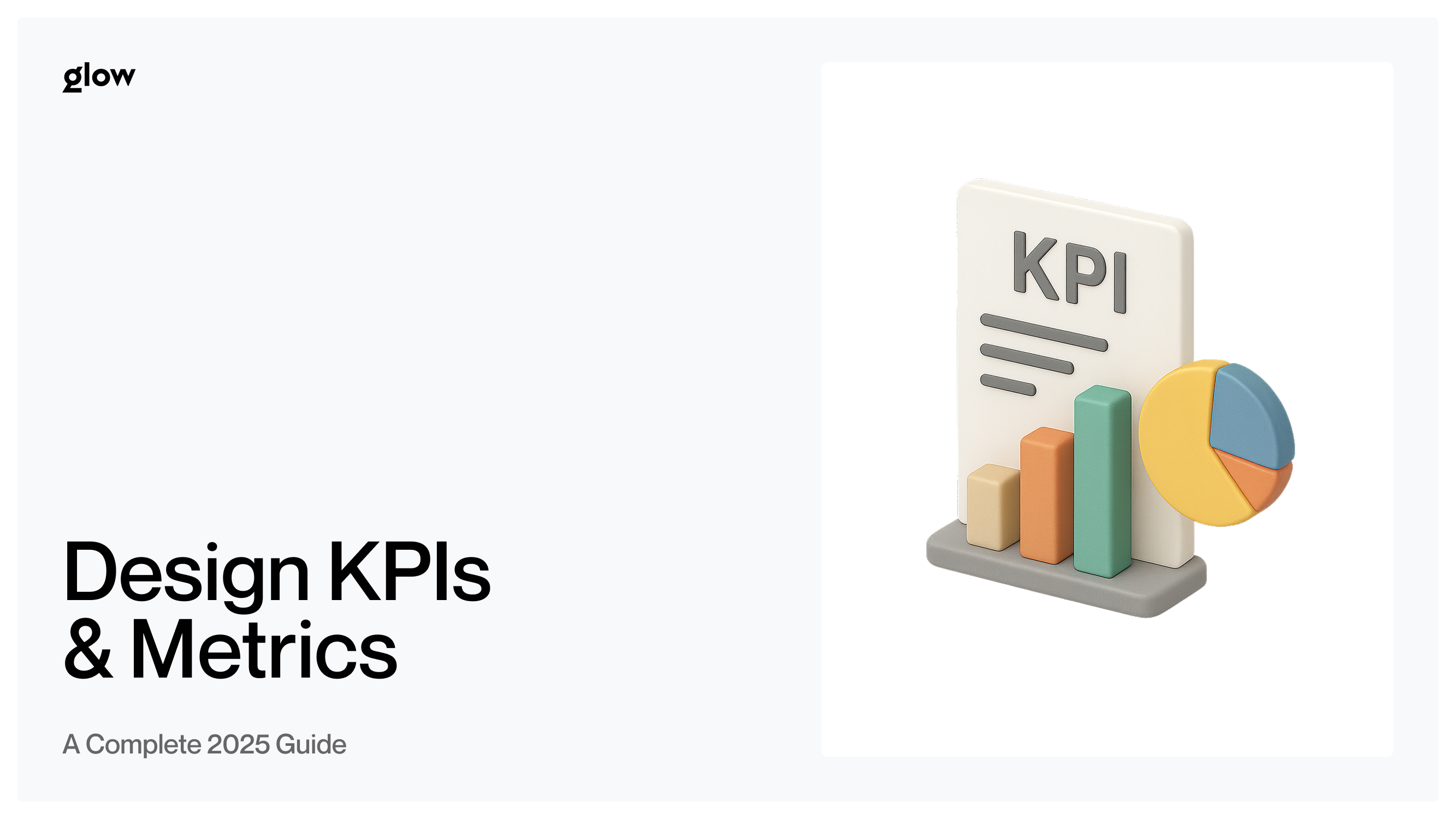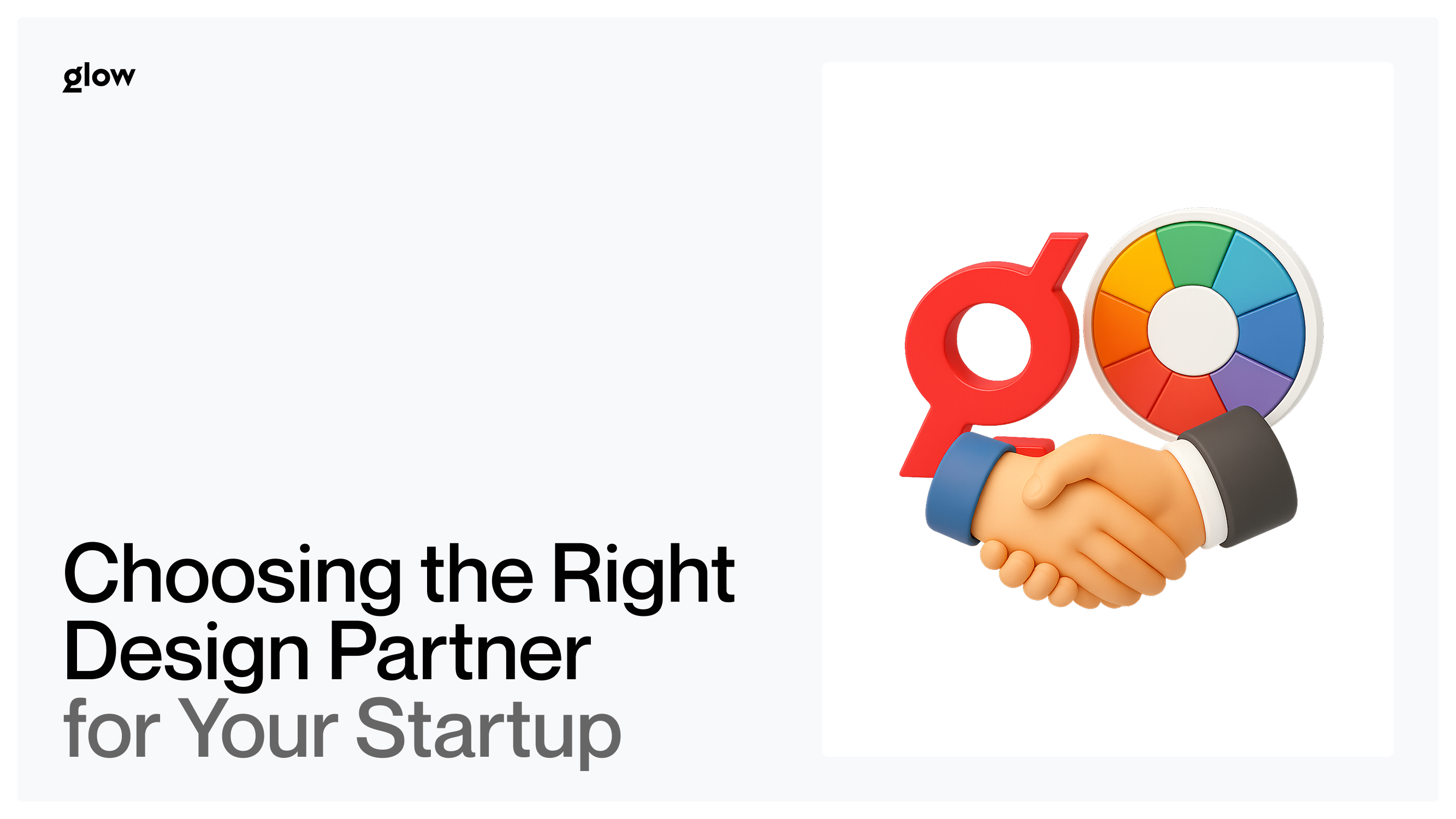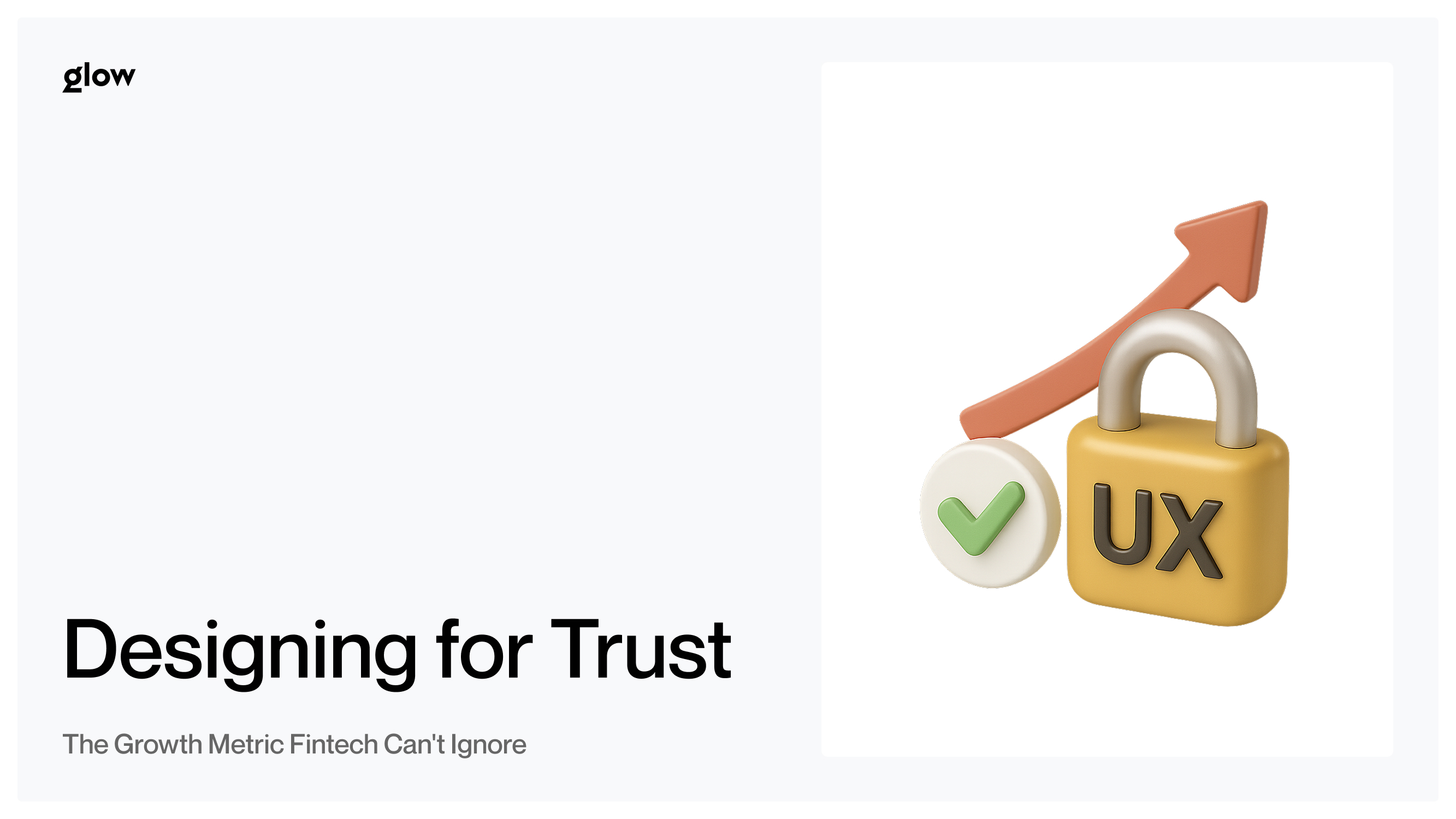In 2025, design is no longer just about aesthetics - it's a strategic lever for growth. Companies that systematically track design KPIs see 2x higher conversion rates and 30% lower churn than those that don't measure design impact. Yet many teams still struggle to connect design decisions to business outcomes. This guide breaks down the essential design metrics every modern team should track, how to collect them, and how to avoid common pitfalls.
Why Design Metrics Matter in 2025

Modern product teams operate in a data-driven environment where every decision needs justification. Design can no longer rely on gut feeling or subjective preferences. UX metrics provide the evidence needed to prioritize features, allocate resources, and prove ROI.
Connecting Design Decisions to Business Outcomes
Great design directly impacts revenue, retention, and operational efficiency. When Airbnb redesigned their host onboarding flow, they tracked design metrics at every step - task completion rate increased by 25%, support tickets dropped by 40%, and host activation improved by 15%. These weren't accidental wins; they were the result of systematic measurement and iteration.
The key is establishing clear causality: how does a design change affect user behavior, which in turn affects business metrics? For example, reducing checkout friction (design) → higher completion rate (behavior) → increased revenue (business outcome).
Why Teams Should Track KPIs, Not Just Output
Many design teams measure the wrong things: the number of mockups created, the number of design sprints completed, or the hours spent on projects. These are output metrics - they tell you what the team did, not whether it mattered.
Design KPIs, on the other hand, measure outcomes: did users accomplish their goals faster? Did the redesign increase conversions? Did the new design system improve development velocity? According to Nielsen Norman Group research, every dollar invested in UX returns $100 - but only if you're measuring the right things.
Types of Design Metrics and What They Measure

Effective measurement requires understanding different categories of UX metrics. Each serves a specific purpose and answers various questions about design effectiveness.
User-Centric Metrics (Experience & Behavior)
These metrics focus on how users interact with your product:
- Task success rate measures whether users can complete critical actions. If only 60% of users complete checkout, you have a design problem.
- Task completion time shows efficiency. Reducing form completion time from 5 minutes to 2 minutes can dramatically improve conversion rates.
- Error rate tracks mistakes - clicking wrong buttons, form validation errors, navigation confusion. High error rates indicate unclear UI or poor information architecture.
- User satisfaction (CSAT, NPS) captures subjective experience. While not perfect, an NPS consistently below 30 signals serious UX issues.
- Engagement metrics include time on page, feature usage, and revisit frequency. Low engagement often means poor discoverability or an unclear value proposition.
- Adoption and retention measure whether users stick around. A beautiful onboarding flow is worthless if 80% of users churn after day 3.
Business-Focused Metrics (Impact & Growth)
These UI metrics connect design directly to company goals:
- Conversion rate is the gold standard for e-commerce and SaaS. Even a 1% improvement can mean millions in additional revenue.
- Funnel performance identifies where users drop off. If 50% abandon the pricing page, focus your design efforts there.
- ROI of design initiatives compares investment versus return. Did the redesign cost $50K but generate $500K in additional conversions?
- Design cost tracks efficiency - how long does it take to ship features? Are you over-designing low-impact pages?
- LTV improvements show how design affects long-term value. Better onboarding can increase customer lifetime value by 20-30%.
- Reduced support tickets are an underrated metric. According to Forrester research, improving UX can cut support costs by up to 40%.
Technical & Engineering Metrics (Quality & Performance)
Design doesn't exist in isolation - technical implementation matters:
- Performance metrics such as load time and responsiveness directly impact the user experience. Google data shows that pages that load in under 2 seconds convert 3x better than those that take 5+ seconds.
- Accessibility compliance (WCAG 2.1 AA minimum) isn't optional - it's both ethical and legally required in many jurisdictions.
- Design system consistency measures how often teams use standardized components versus creating one-offs. Low consistency means technical debt.
- Component reuse rate shows design system adoption. If only 40% of components come from the design system, you're wasting engineering resources.
The Top 10 Essential Design KPIs for Modern Teams

Based on industry best practices and impact analysis, here are the design KPIs every team should track:
1. Task Success Rate
Definition: Percentage of users who complete critical tasks without assistance.
Why it matters: This is the most fundamental UX metric. If users can't complete core tasks, nothing else matters.
Target: 90%+ for critical flows, 80%+ for secondary features.
How to measure: User testing, session recordings, funnel analytics.
2. User Satisfaction Score (CSAT/NPS)
Definition: How satisfied users are with their experience.
Why it matters: Correlates strongly with retention and word-of-mouth growth.
Target: CSAT 80%+, NPS 40+ (varies by industry).
How to measure: In-app surveys, post-interaction prompts, and email questionnaires.
3. Time on Task
Definition: How long users take to complete specific actions.
Why it matters: Efficiency directly impacts satisfaction and conversion. Users have limited patience.
Target: Benchmark against competitors and continuously improve.
How to measure: Task timing in usability tests, analytics event tracking.
4. Conversion Rate
Definition: Percentage of users who complete desired actions (purchase, signup, subscription).
Why it matters: Direct revenue impact. Small improvements compound significantly.
Target: Industry-dependent, but 2-5% is average for e-commerce, 5-15% for SaaS trials.
How to measure: Analytics platforms, A/B testing tools.
5. Engagement and Feature Usage
Definition: How actively users interact with product features.
Why it matters: Low engagement means poor discoverability or unclear value.
Target: 60%+ of users should regularly use core features.
How to measure: Event tracking, feature adoption dashboards.
6. Iteration Count (Design Cycle Efficiency)
Definition: Number of design iterations needed before shipping.
Why it matters: Too many iterations signal unclear requirements; too few suggest a lack of refinement.
Target: 2-4 major iterations for complex features.
How to measure: Design process tracking, version control.
7. Design Consistency Score
Definition: Percentage of interface elements following design system guidelines.
Why it matters: Consistency reduces cognitive load and builds trust.
Target: 90%+ adherence to design system.
How to measure: Design audits, automated design linting tools.
8. Accessibility Compliance Level
Definition: WCAG conformance level (A, AA, AAA).
Why it matters: Ethical responsibility, legal compliance, and reaches 15%+ more users.
Target: WCAG 2.1 AA minimum, AAA for critical flows.
How to measure: Automated accessibility testing tools, manual audits.
9. Design System Adoption Rate
Definition: Percentage of product built using design system components.
Why it matters: Higher adoption means faster development and better consistency.
Target: 80%+ for mature design systems.
How to measure: Codebase analysis, component usage tracking.
10. Design Impact on Business KPIs (Revenue, Retention)
Definition: Direct correlation between design changes and business outcomes.
Why it matters: Proves design's strategic value to leadership.
Target: Demonstrate measurable lift (10%+ improvement) on key business metrics.
How to measure: Before/after analysis, multivariate testing, and cohort analysis.
How to Design Good Metrics

Not all design metrics are created equal. Here's how to choose metrics that actually drive improvement:
Start With Problems, Not Tools
Don't measure something just because your analytics tool makes it easy. Start with user or business problems: "Users abandon the signup flow" → measure completion rate, error rate, and time on task.
Tie Every Metric to a User or Business Outcome
Every design KPI should answer "so what?" If task completion time decreases, does that increase satisfaction? Revenue? Retention? If you can't connect a metric to outcomes, don't track it.
Avoid Vanity Metrics (Examples)
Vanity metrics look impressive, but don't drive decisions:
- Total page views (without context on quality)
- Social media likes on design posts
- Number of mockups created
- Design awards won
Actionable metrics enable improvement:
- Conversion rate by page variant
- Error rate by form field
- Feature adoption by user segment
Align KPIs With Your Product Stage (MVP → Scale)
MVP stage: Focus on task success rate, user satisfaction, and qualitative feedback. You need to validate the core value proposition.
Growth stage: Add conversion rate, engagement metrics, and funnel performance. You're optimizing for scale.
Mature product: Include design system adoption, consistency scores, and efficiency metrics. You're optimizing for operational excellence.
How to Collect and Analyze Design Metrics

Effective measurement requires combining multiple data sources to get a complete picture.
Quantitative Methods (Analytics, A/B, Heatmaps)
Analytics platforms (Google Analytics, Mixpanel, Amplitude) track behavioral UI metrics such as page views, clicks, conversions, and drop-off points.
A/B testing isolates design impact. Change one variable (button color, form layout, copy) and measure the difference.
Heatmaps and session recordings (Hotjar, FullStory) show where users click, scroll, and struggle. Invaluable for identifying friction points.
Funnel analysis reveals where users drop off in multi-step flows. If there is a 50% drop at step 3, investigate design issues at that stage.
Qualitative Methods (User Testing, Interviews)
Moderated usability testing gives deep insights into user thinking. Watch five users attempt key tasks and you'll discover 85% of major issues.
Unmoderated remote testing (UserTesting, Maze) scales research. Run tests with 50+ users to validate findings statistically.
User interviews uncover motivations and context that analytics can't. Why did users abandon it? What were they trying to accomplish?
Surveys capture subjective experience at scale. CSAT and NPS are standard, but custom questions can reveal specific design issues.
Combining Data for Real Insights
The magic happens when you triangulate multiple sources: Analytics shows 60% abandon checkout at shipping page → Heatmaps reveal users repeatedly click disabled button → User testing finds shipping calculator is confusing → Fix design → Measure improvement.
According to Baymard Institute research, the average cart abandonment rate is 70%, but companies that systematically combine quantitative and qualitative UX metrics reduce it to 40-50%.
Common Mistakes When Tracking Design KPIs

Even experienced teams make these errors when implementing design metrics:
Measuring Too Much or the Wrong Things
Don't track 50 metrics - focus on 5-10 that actually inform decisions. Too many design KPIs create noise and dilute focus.
Lack of Baselines and Benchmarks
"Our NPS is 45" is meaningless without context. Is that good for your industry? How does it compare to last quarter? Always establish baselines before making changes.
Mixing UX Metrics With Personal Opinions
"I think users will love this" isn't a metric. "Task success rate increased from 65% to 85%" is. Separate subjective preferences from objective measurement.
Ignoring Technical and Accessibility Metrics
A beautiful design that loads slowly or excludes disabled users is a failed design. Technical performance and accessibility are non-negotiable UI metrics.
FAQ

What are metrics in design?
Design metrics are quantifiable measures used to evaluate the effectiveness, usability, and business impact of design decisions. They include user behavior data (task completion, engagement), satisfaction scores (CSAT, NPS), and business outcomes (conversion rate, revenue lift).
What is a design KPI?
A design KPI (Key Performance Indicator) is a specific, measurable value that demonstrates how effectively design contributes to business goals. Examples include task success rate, conversion rate, time on task, and design system adoption rate.
How do you measure UX success?
UX success is measured through a combination of UX metrics: task success rate (can users complete goals?), user satisfaction (CSAT/NPS), efficiency (time on task), error rate, engagement, and business impact (conversion, retention). The specific mix depends on product goals and stage.
How to design effective metrics?
Effective design metrics are: (1) tied to specific user or business outcomes, (2) actionable - they inform design decisions, (3) comparable - tracked consistently over time, (4) relevant to product stage, and (5) avoid vanity metrics that look good but don't drive improvement.
How Glow Team Helps Companies Build Metrics-Driven Design

At Glow Team, we don't design in the dark. Every project starts with establishing baseline design KPIs aligned to your business goals. We combine quantitative analytics, qualitative user research, and A/B testing to validate every design decision with data.
Our approach:
- Audit current metrics to identify gaps and opportunities
- Define success metrics before starting design work
- Implement tracking for both UX metrics and business outcomes
- Iterate based on data, not opinions
- Report impact with clear before/after metrics
We've helped SaaS companies increase conversion rates by 40%, reduce onboarding time by 50%, and improve NPS from 25 to 60 - all through systematic measurement and data-driven design.
Ready to build a metrics-driven design culture? Get in touch with our team, and let's define the KPIs that will transform your product.








